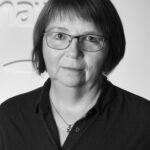Microbial diversity in hot springs in Vonarskarð / Microbial diversity in hot springs in Vonarskarð
Samples were taken in the geothermal area east of Eggja in Vonarskarð. A total of 32 samples were taken from different hot springs, streams and soils at different temperatures and acidity levels. Elements were measured in several water samples. The species composition of bacteria and ancient bacteria was determined by molecular biological methods. A total of 1052 16S rRNA gene sequences of bacteria were detected, spreading across 23 factions. More than 50 new bacterial species were found in the samples, of which 11 are probably representatives of new genera. The genome of ancient bacteria was 155 in number. Ten new species of ancient bacteria were found, including five representatives of new genera. The ecosystem of the geothermal area as a whole must therefore be considered very special. The most common were the primitive species of the array Aquificae. Primitive and non-primitive Proteobacteria species were found in significant quantities and were both known and new species. Typical species of bluish-green bacteria and Chloroflexi were found in the samples. Firmicutes, Bacteroidetes and Chlorobi species were found mainly in samples taken at lower temperatures. Ancient bacteria found in the samples were spread over two largest groups of ancient bacteria, i.e. Crenarcheota and Euryarchaeota. The biological diversity of bacteria and archaeal bacteria in the samples was most often in the range Nt / Nmax = 1.0 -3.0, which is typical of peripheral ecosystems. In some cases it was higher, especially in samples where the temperature was relatively low and therefore more viable for more species. Seven bacterial species were cultured from the samples, including one new species of the genus Sediminibacter from the Bacteroidetes class. Several Thermus species were bred, including T.islandicus which is native to Iceland. The proteobacteria Thermomonas hydrothermalis and Tepidimonas ignava were also grown from several samples and the thermophilic Firmicutes species Anoxybacillus kualawohkensis.
Samples were taken from the geothermal area east of Eggja in Vonarskarð. A total of 32 samples were collected from different sites at various temperature and pH values. The concentration of 72 elements were estimated in water samples. Species composition of Bacteria and Archaea was estimated using molecular methods. A total of 1052 16S rRNA gene sequences belonging to 23 bacterial phyla were detected. Roughly 50 novel bacterial species were found of which 11 represent new genera. Ten novel archaeal species were found, five of which represent new genera. Species belonging to the autotrophic phylum of Aquificae dominated many samples. Species of different subphyla of Proteobacteria were also represented in high ratios in the samples, both described and novel species. Common species of Cyanobacteria and Chloroflexi were also detected. Species of the Firmicutes, Bacteroidetes and Chlorobi phyla were common in samples taken at lower temperatures. Archaeal species in the samples belonged to both Crenarchaeota and Euryarchaeota. The calculated biodiversity index for bacteria and archaea in the samples was 1,0-3,0 which is in concordance with values obtained for extreme ecosystems. It was higher in a few samples which were taken at lower temperatures and thus represent habitats acceptable for more diverse organisms. Seven bacterial species were isolated from the samples. One of these represents a novel species of the genus Sediminibacter within the phylum of Bacteroidetes. Several Thermus species were cultivated, ie T.islandicus which has so far only been found in Iceland. The Proteobacteria species Themomonas hydrothermalis and Tepidimonas ignava were also isolated as well as a thermophilic Firmicutes species, Anoxybacillus kualawohkensis.



